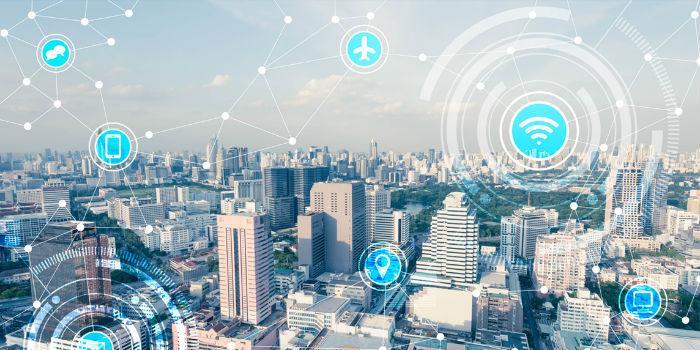 International. As soon as the built environment sectors adopted the concept of smart buildings, the emphasis has shifted to smart cities. What could this mean for facility managers and how might it influence where organizations are headed in the future?
International. As soon as the built environment sectors adopted the concept of smart buildings, the emphasis has shifted to smart cities. What could this mean for facility managers and how might it influence where organizations are headed in the future?
The best of today's "smart buildings" is imbued with the kind of systems that were once confined to the realms of science fiction. By automating the processes that control the physical environment, from ventilation and heating to lighting and safety, new technologies bring workplaces to life and push the boundaries of what's possible.
The vast majority of contemporary workplaces, however, are failing in these areas that are so crucial to the employee experience. According to Leesman, a global business intelligence tool that measures and compares how workplaces support employee and organizational performance, the vast majority of workplaces fail to deliver results in the most elementary areas. The Leesman index, which contains more than 300,000 employee responses, shows that temperature control, for example, is an extremely difficult component for organizations. While its importance is rated at 78.6 (the Leesman Index scoring system is 0-100), the average satisfaction score for temperature control is 29.5, which represents a huge gap between expectation and satisfaction. By using artificial intelligence, sensors and Internet of Things technology, where a multitude of assets are connected to the network, smart buildings can measure relevant areas such as weather,
Therefore, smart technologies could help increase employee comfort, but they can also be used to improve service or experience in other, more sophisticated ways. Gregory Blondeau, founder of visitor management software developer Proxyclick, explains: "From the moment a visitor arrives, intelligent systems work together to deliver a VIP experience. Parking facilities recognize your car, access control is open for you, you enter the elevator on the right floor, you can access the Wi-Fi and indoor navigation takes you to the right meeting room where your favorite drink is waiting for you – everything is solved in an integrated and smart way".
Smart buildings for smart cities
So advanced is this technology, however, that attention is already being paid to creating much larger networks, often referred to as "smart cities." It is a concept that gains traction in the property and in the FM spheres. At MIPIM, the world's largest annual gathering of real estate professionals, in March, the consensus was that the advent of smart cities will give built environment disciplines a central role among a number of critical global challenges. As Christian Schulz, chief operating officer of Schindler Management AG, an international manufacturer of elevators and escalators, noted in a session, multiple megatrends, including an aging population and the rise of the global middle class, point to the exponential growth of the world's major cities. The UN estimates that 6.3 billion people will live in urban areas by 2050.
"This staggering growth rate will inevitably place a considerable burden on resources, from basic services such as food and water to other essentials such as transporting housing and even open spaces," says Brian Zrimsek, industry director at MRI Software, who believes the population will benefit. of a better management of these resources. "Large smart grids will facilitate this management, ultimately maintaining a standard of living that will improve over time, even as the population grows. However, these networks will need to be based on an 'open and connected' approach to truly harness the potential."


























Leave your comment